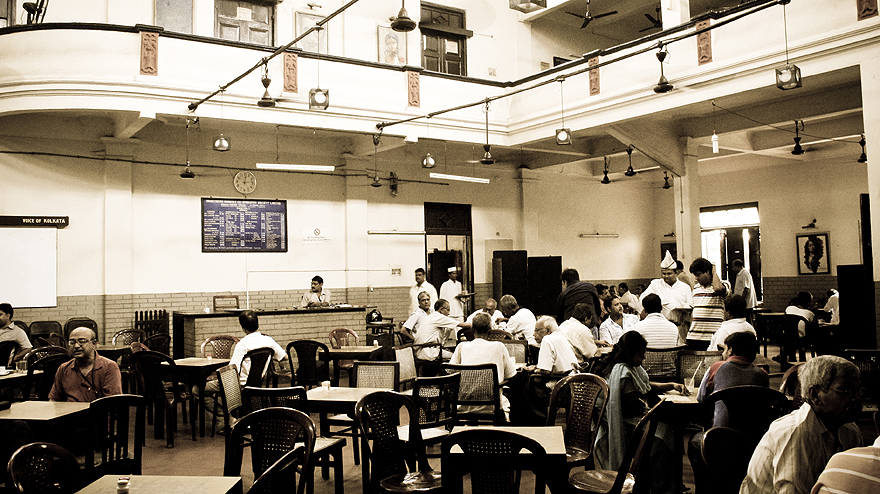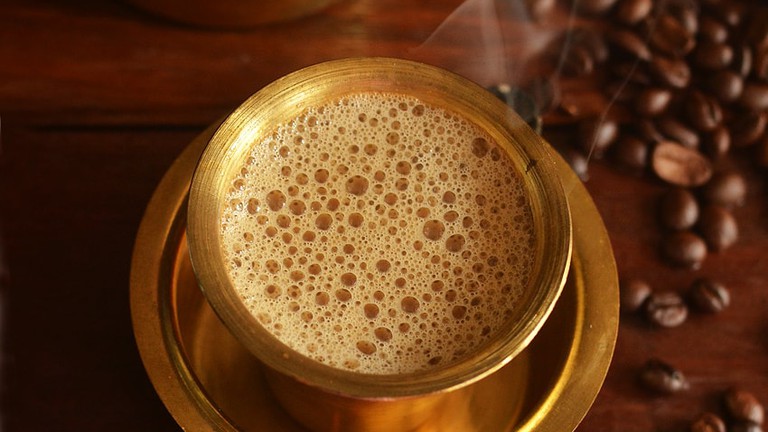By Vinaya K

The age-old connection India has with chai is well known. Local teashops have for centuries served as newsrooms and chatting corners for rural Indians. The depiction of tea shops as happening places in many Indian regional language films till the first few years of the twenty- first century underlines the importance they had in India’s cultural and social space. Underneath this overwhelming ‘chai’ culture, coffee has always been a vague presence; the only reminders of coffee being the ‘Indian Coffee House’ across the country. It was during the early 1940s when a small group of dismissed Indian Coffee Board members created the ‘Indian Coffee House’ coffee and the conversations around a coffee table became more acquainted in Indian urban space.

Established under the leadership of A.K. Gopalan, who with the help of the then Prime Minister Jawaharlal Nehru, mobilized workers and encouraged them to establish Indian Coffee Workers’ Cooperative Societies which gradually gave birth to Indian Coffee Houses across the nation. The first one opened in Bengaluru in 1957 before spreading to the rest of the country, including Delhi, Kerala, Tamil Nadu, West Bengal and Punjab. The Coffee House became the nation’s centre for both coffee and conversation and is still serving its loyal patrons in over 400 locations. What made it popular was the affordable and authentic food served there as well as the space it provided for intellectual and creative conversations. There is a whole generation of Indians who grew up in the ‘Coffee House culture’. However, it seems that the Indian Coffee House is now only a part of a great legacy and nostalgic memory; because gone are the days of creative and controversial, caffeine-fuelled conversations.
In 1996, when Cafe Coffee Day got the ball rolling with over 1500 locations all over the globe bringing the convenience of a barista and providing a proper place for the people to meet up, it was a beginning of a great new epoch in the Indian coffee history. Young people were the first to jump on the café bandwagon. For the youth, a coffee house was not only a place to buy lattes and cappuccinos, but also a much-needed urban space lacking till then. A café offers a neutral meeting place that allows friends and colleagues to get together in a space that is neither a home nor a workplace. The older generation also caught up fast with this new trend-setting up informal work meetings in cafes. Not surprisingly, tourists are also big fans of cafés that offer them their caffeine fix in a cosy environment complete with Wi-Fi and air conditioning. These days you can find coffee shops located not only in train stations, hospitals, airports, shopping mall etc. but even in small towns and rural areas.
What makes the western-style café chains do so well in a country traditionally associated with tea, and where coffee can be bought at a much cheaper price is the growing sentiments and sensibilities we share with the international culture and American TV shows. Places like ‘Starbucks’ are particularly popular with younger generations, students, businessmen and the rising middle classes. It is partly a response to the international experiences of a population that has begun to experience these types of places abroad, and want to do so at home. What these types of cafés essentially provide is a safe and comfortable space to escape the chaos of the city.

How is this new urban café culture different from the traditional coffee shops we had, especially in the Southern states? While the traditional coffee shops offered coffee only, with the new style of café, space and ambience is as important a product as the coffee itself, and a big reason for the success of these businesses. Cafés are much more expensive than kaapi bars, but for the price, you also get an unmatchable space where you can meet with friends, colleagues or relatives. Nonetheless, what matters is whether you prefer to sip your filterkaapi from a local coffee bar in Tamil Nadu, or post Instagram stories with your friends in a cosy cafe in Mumbai, it is likely that coffee culture is here to stay. Indeed, in India, ‘a lot can happen over coffee’.

